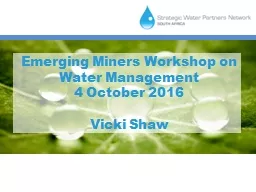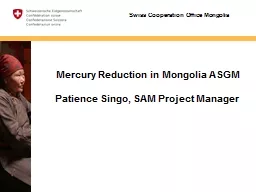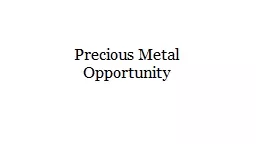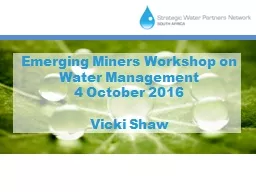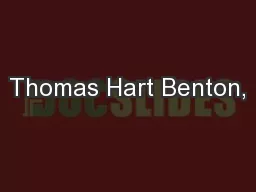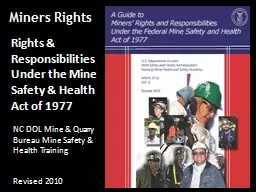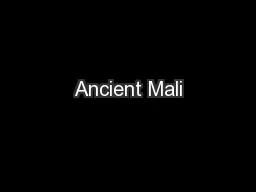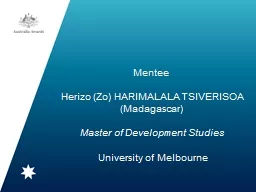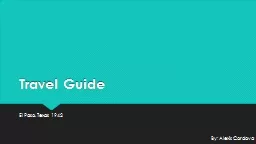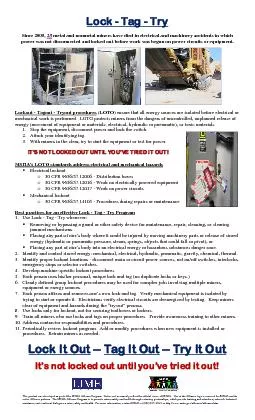PPT-Emerging Miners Workshop on Water Management
Author : sherrill-nordquist | Published Date : 2018-11-06
4 October 2016 Vicki Shaw Background SWPN Publicprivatecivil society partnership Launched at COP 17 in Durban South Africa in 2011 Members include DWS Anglo
Presentation Embed Code
Download Presentation
Download Presentation The PPT/PDF document "Emerging Miners Workshop on Water Manage..." is the property of its rightful owner. Permission is granted to download and print the materials on this website for personal, non-commercial use only, and to display it on your personal computer provided you do not modify the materials and that you retain all copyright notices contained in the materials. By downloading content from our website, you accept the terms of this agreement.
Emerging Miners Workshop on Water Management: Transcript
Download Rules Of Document
"Emerging Miners Workshop on Water Management"The content belongs to its owner. You may download and print it for personal use, without modification, and keep all copyright notices. By downloading, you agree to these terms.
Related Documents

